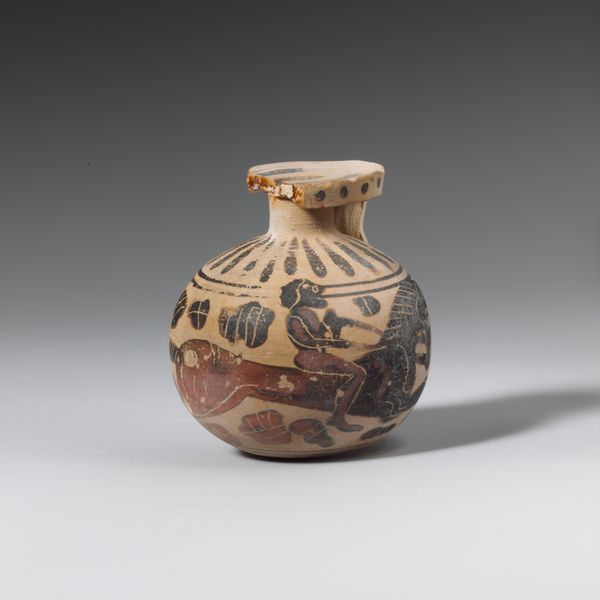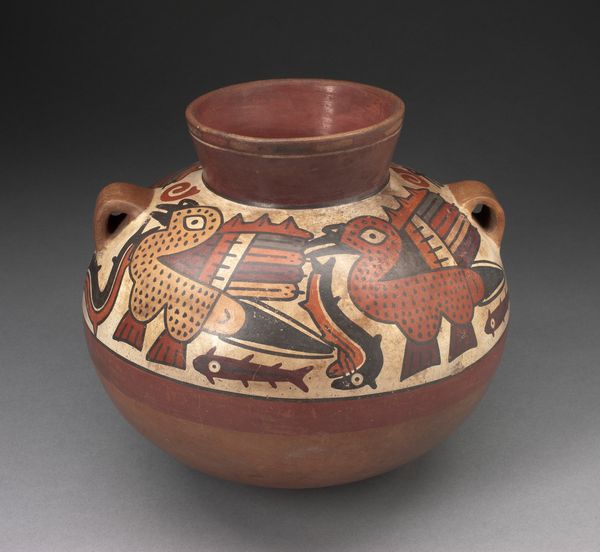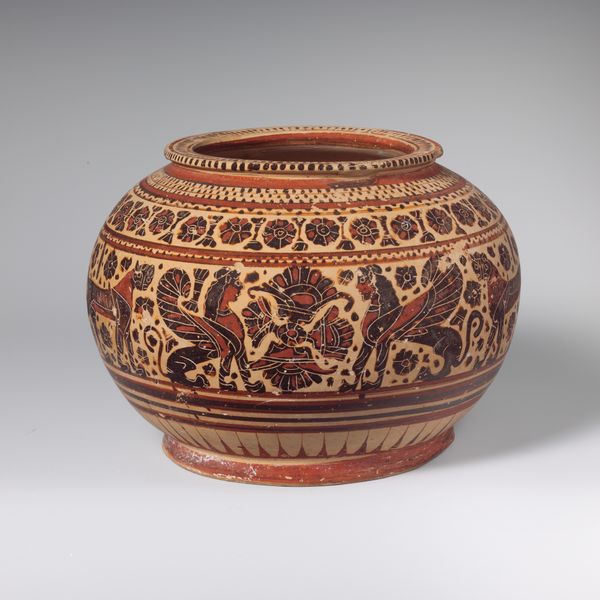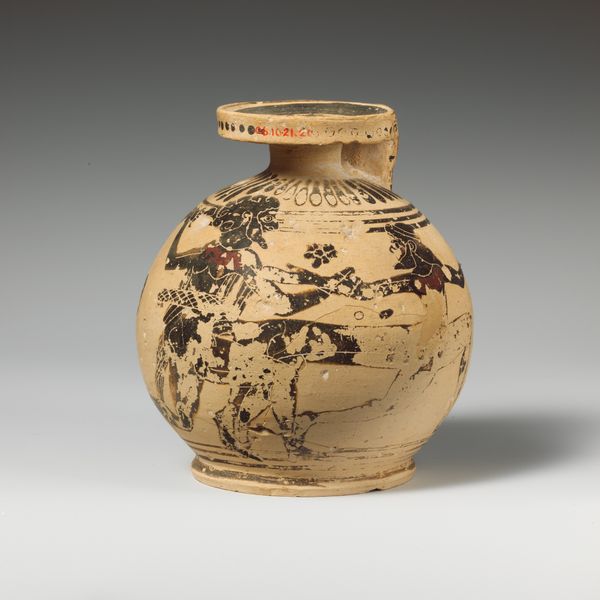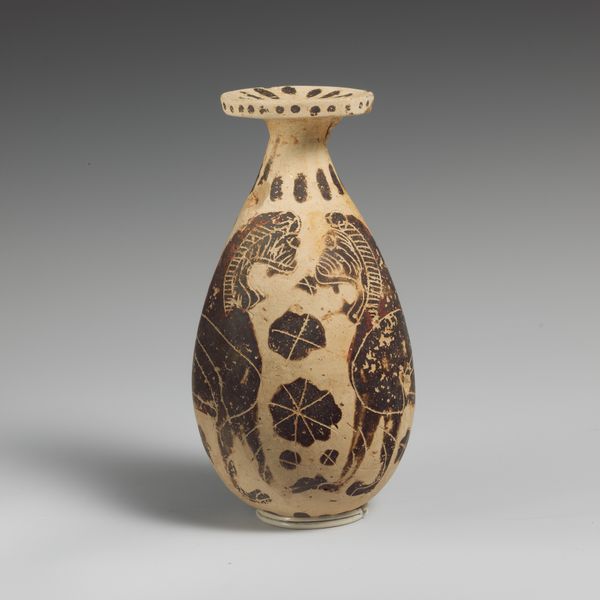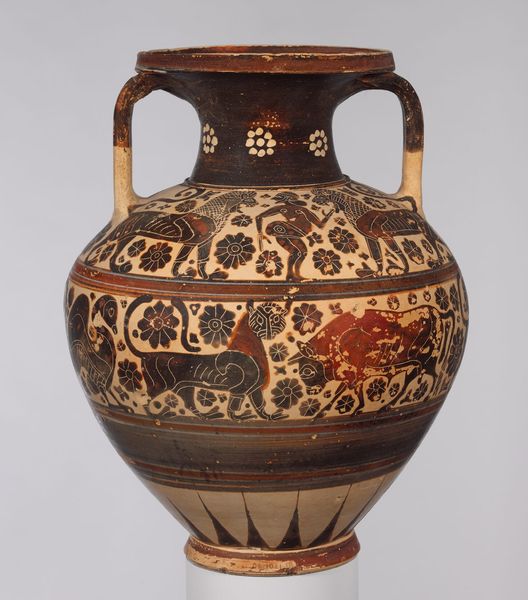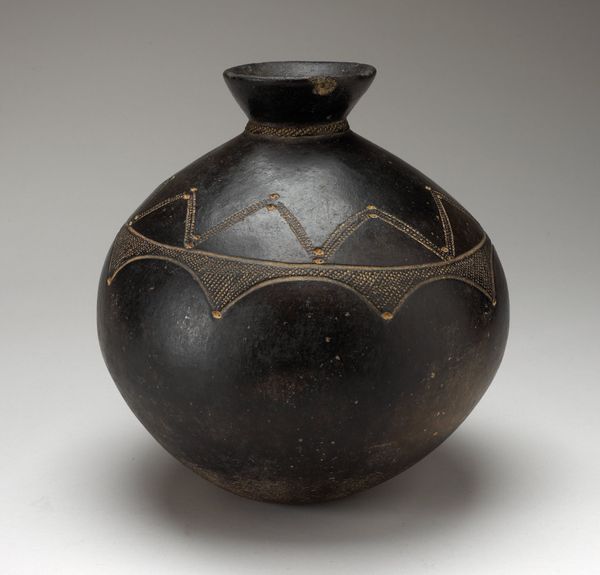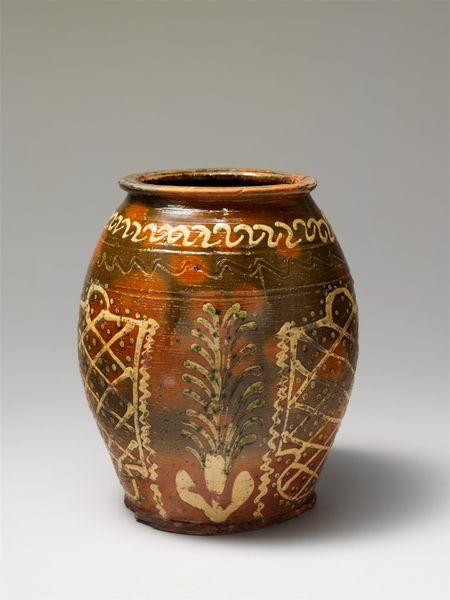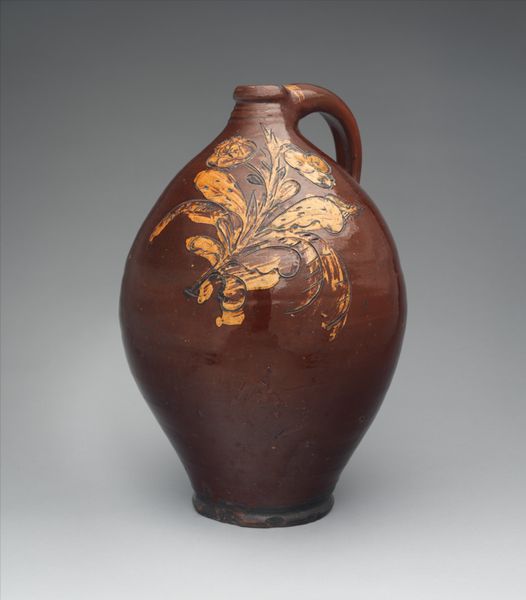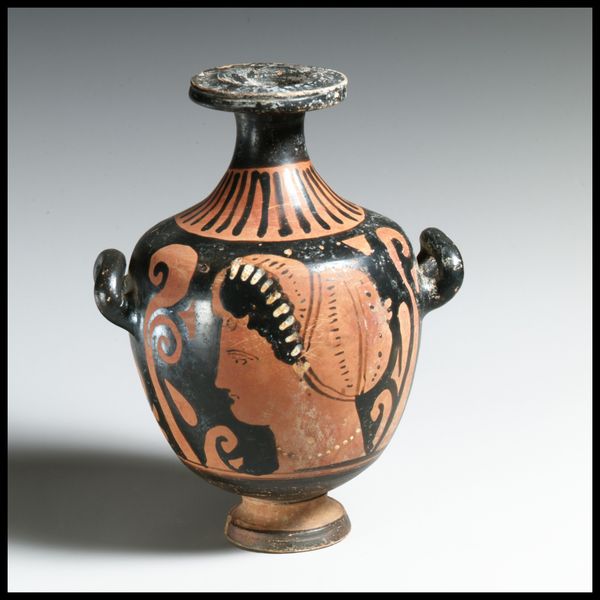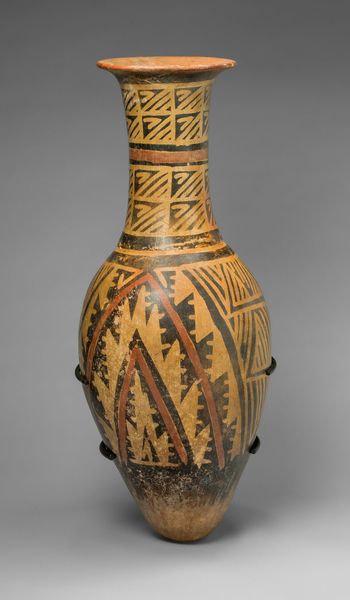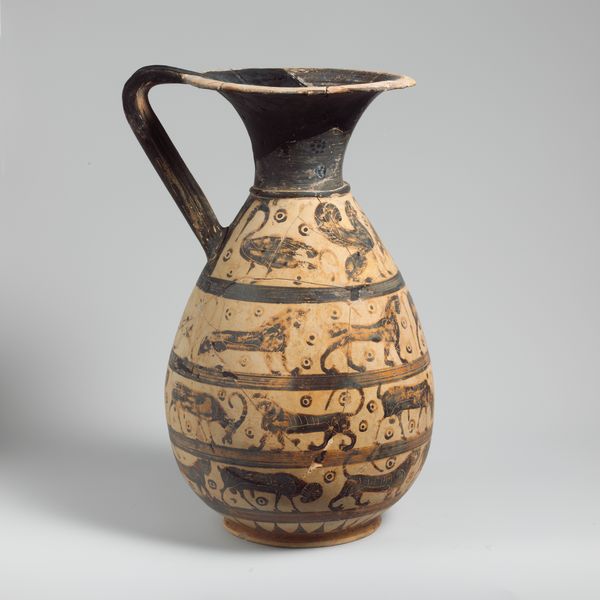
ceramic, terracotta
#
portrait
#
pottery
#
human-figures
#
greek-and-roman-art
#
ceramic
#
vase
#
figuration
#
roman-art
#
stoneware
#
ancient-mediterranean
#
ceramic
#
genre-painting
#
terracotta
#
miniature
Dimensions: H.: 4 3/8 in. (11.1 cm)
Copyright: Public Domain
Curator: This terracotta aryballos, an oil flask, dates back to approximately 620 BC. It's currently housed at the Metropolitan Museum of Art. Editor: I’m immediately struck by the figures; they look like they’re dancing! The terracotta has this incredible, warm surface—you can almost feel the potter's hands on it. Curator: Indeed. Aryballoi were quite common in ancient Greece, particularly among athletes. They used them to store oil for grooming and massage after athletic competitions. This one presents an interesting window into that societal practice. Editor: Thinking about its purpose as a container for oil – consider how everyday items like this illuminate production. Did one workshop supply many, or were there small-scale operations tied to gymnasia, crafting objects specific for athlete users? The decorations aren't high art but practical art. Curator: Absolutely. These flasks were functional objects but their decoration reveals much about the cultural values and aesthetics of the time. Notice the intricate details, typical of Corinthian pottery, demonstrating narratives and motifs significant to that society. Editor: The figures appear lively. There's something joyous conveyed via limited dark, bold brushwork on ceramic. And there are botanical forms. Is that symbolic, referencing the olive or the floral components infused in the oil? Curator: Possibly both! The integration of figures and floral motifs creates a cohesive design reflecting a harmonious relationship with nature. These details not only aestheticized the object but likely also communicated symbolic meanings to its users. Editor: The fact that the material is relatively stable contributes to a tangible connection with a past workforce, doesn't it? Holding it gives the potential to reconstruct, reconstruct that past effort – which makes it far more interesting. Curator: Precisely! Its endurance allows it to function as an artefact of history, displaying cultural legacy; It helps us remember and celebrate these classical cultures. Editor: Looking at the overall materiality really provides access into these everyday aspects. Curator: I agree, and examining the craftsmanship enables new awareness in regards to ancient Greeks as individuals, artists, and members of their time.
Comments
No comments
Be the first to comment and join the conversation on the ultimate creative platform.
